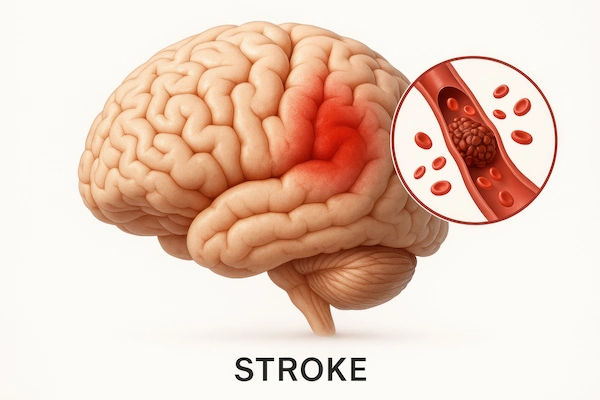Guide to Stroke Know Risk Factors And Warning Signs
Learn about the key risk factors and early warning signs of a stroke. This guide helps you recognize symptoms, understand causes, and take preventive steps for better brain health.

Written by Dr. Dhankecha Mayank Dineshbhai
Reviewed by Dr. Md Yusuf Shareef MBBS
Last updated on 13th Oct, 2025

Introduction
A stroke is a medical emergency that strikes like a lightning bolt, disrupting the blood supply to a part of your brain. This sudden interruption deprives brain cells of oxygen and nutrients, causing them to begin dying within minutes. The effects can be devastating, potentially leading to long-term disability or even death. However, here's the most crucial thing to know: a stroke is often preventable, and its most severe consequences can be mitigated with swift action. This comprehensive guide is designed to empower you with knowledge. We will demystify what a stroke is, delve into the critical risk factors you need to be aware of—both those you can change and those you can't—and engrave the life-saving warning signs into your memory. Understanding these elements is your first and most powerful line of defense, potentially saving your life or the life of someone you love. Let's begin by understanding what happens inside the brain during a stroke.
What Exactly is a Stroke? A Brain Under Attack
Think of your brain as the command center of your body, and your blood vessels as the vital supply routes. A stroke occurs when one of these routes is suddenly blocked or ruptures. This is a "brain attack," analogous to a heart attack, but with equally urgent and dire consequences for brain function. The brain tissue affected by the loss of blood flow can suffer irreversible damage, impacting everything from movement and speech to memory and emotion.
The Two Main Types of Stroke
Not all strokes are the same. Understanding the type helps doctors determine the best immediate treatment.
Ischemic Stroke: The Clogged Artery
This is the most common type, accounting for about 87% of all strokes. An ischemic stroke happens when a blood clot blocks an artery supplying blood to the brain. The clot can form directly in a brain artery (thrombotic stroke) or travel from elsewhere in the body, such as the heart, and lodge in a narrower brain artery (embolic stroke). The underlying cause is often atherosclerosis, a buildup of fatty deposits (plaque) that narrows the arteries.
Hemorrhagic Stroke: The Burst Blood Vessel
A hemorrhagic stroke is less common but often more deadly. It occurs when a weakened blood vessel in the brain ruptures and bleeds into the surrounding tissue. The leaking blood compresses brain cells, damaging them. The two main types of weakened vessels that cause this are aneurysms (balloon-like bulges) and arteriovenous malformations (AVMs), which are tangles of faulty blood vessels. Uncontrolled high blood pressure is a primary culprit behind hemorrhagic strokes.
TIAs: The Warning Stroke You Should Never Ignore
A transient ischemic attack (TIA), often called a "mini-stroke," is a temporary blockage that causes stroke-like symptoms but resolves within minutes to hours, leaving no permanent damage. However, a TIA is a major warning sign that a full-blown, severe stroke may be imminent. Ignoring a TIA is a critical mistake. It requires immediate medical evaluation to identify and address the underlying cause.
Know the Enemy: Top Risk Factors for a Stroke
Many risk factors for stroke are well-established. Some are within your power to control, while others are not. The key is to focus on managing the modifiable factors to reduce your overall risk significantly.
Consult an General Physician
Medical Conditions That Increase Your Risk
Certain chronic conditions put immense strain on your cardiovascular system, dramatically increasing your stroke risk.
High Blood Pressure (Hypertension): This is the single most important controllable risk factor. Hypertension damages and weakens blood vessels over time, making them prone to clogging or bursting.
High Cholesterol: Elevated levels of LDL ("bad") cholesterol contribute to plaque buildup in arteries (atherosclerosis), narrowing them and increasing the chance of a clot.
Atrial Fibrillation (AFib): This irregular heartbeat can cause blood to pool and clot in the heart. These clots can then travel to the brain, causing an embolic stroke.
Diabetes: Chronically high blood sugar damages blood vessels throughout the body, including those in the brain, accelerating atherosclerosis.
Lifestyle Choices You Can Change
Your daily habits play a monumental role in your stroke risk profile.
Smoking: Nicotine and carbon monoxide from cigarettes damage the cardiovascular system, raising blood pressure and reducing oxygen in the blood.
Physical Inactivity & Obesity: A sedentary lifestyle contributes to other risk factors like hypertension, high cholesterol, and diabetes.
Unhealthy Diet: A diet high in saturated fats, trans fats, cholesterol, and sodium increases the risk of plaque buildup and high blood pressure.
Excessive Alcohol Consumption: Heavy drinking can raise blood pressure and increase the likelihood of hemorrhagic stroke.
Risk Factors Beyond Your Control
While you can't change these, being aware of them helps you and your doctor be more vigilant.
Age: The risk of stroke doubles for each decade after age 55.
Family History: Your risk is higher if a parent, grandparent, or sibling has had a stroke.
Race and Ethnicity: African Americans, Hispanic Americans, and Asian/Pacific Islanders have a higher risk of stroke than Caucasians.
Previous Stroke or TIA: Having already experienced a stroke or TIA significantly increases the risk of having another.
Act FAST: The Critical Warning Signs of a Stroke
Recognizing the symptoms of a stroke and acting immediately is the difference between recovery and permanent disability. Time lost is brain lost.
Decoding the FAST Acronym
The FAST acronym is a simple, memorable tool everyone should know:
F - Face Drooping: Ask the person to smile. Does one side of the face droop or is it numb?
A - Arm Weakness: Ask the person to raise both arms. Does one arm drift downward?
S - Speech Difficulty: Ask the person to repeat a simple phrase. Is their speech slurred or strange?
T - Time to Call Emergency Services: If you observe any of these signs, even if they disappear, call for an ambulance immediately. Note the time when the symptoms first appeared.
Beyond FAST: Other Sudden Symptoms to Recognize
A stroke can manifest in other sudden ways. Be aware of:
Sudden numbness or weakness in the leg.
Sudden confusion, trouble understanding speech.
Sudden trouble seeing in one or both eyes.
Sudden trouble walking, dizziness, loss of balance or coordination.
Sudden severe headache with no known cause, often described as "the worst headache of my life."
Why Every Second Counts: The Importance of Immediate Action
When a stroke happens, up to 1.9 million brain cells can die every minute. Emergency treatments like clot-busting drugs (tPA) or mechanical thrombectomy (physically removing the clot) are only effective within a narrow time window—often just a few hours. Calling emergency services immediately, rather than driving to the hospital yourself, is critical because paramedics can begin life-saving treatment en route and alert the hospital, ensuring the stroke team is ready upon arrival. If you or someone near you exhibits any signs of a stroke, do not wait to see if they get better. Call for help immediately.
Your Blueprint for Stroke Prevention
The good news is that up to 80% of strokes are preventable through proactive management of health and lifestyle.
Managing Medical Conditions like Hypertension
Working with your doctor is essential. If you have been diagnosed with high blood pressure, high cholesterol, or AFib, consistent management with medication and regular check-ups is non-negotiable. If your condition does not improve after trying these methods, book a physical visit to a doctor with Apollo24|7 for a personalized management plan. Apollo24|7 offers a convenient home collection for tests like lipid profile or HbA1c to help you monitor your key health indicators easily.
Adopting a Heart-Healthy Lifestyle
Diet: Embrace a diet rich in fruits, vegetables, whole grains, and lean proteins. The DASH (Dietary Approaches to Stop Hypertension) diet is specifically designed to combat high blood pressure.
Exercise: Aim for at least 150 minutes of moderate-intensity aerobic activity per week.
Smoking Cessation: Quitting smoking is one of the most powerful steps you can take for your vascular health.
Limit Alcohol: If you drink, do so in moderation.
Life After a Stroke: Understanding Recovery and Rehabilitation
Recovery is a journey that begins immediately after the stroke is medically stabilized. The extent of recovery varies, but rehabilitation involving physical, occupational, and speech therapy is crucial for regaining lost functions and maximizing independence. The brain's ability to reorganize and form new connections (neuroplasticity) is the foundation of this recovery.
Consult an General Physician
Conclusion: Empowerment Through Knowledge
A stroke is a formidable health event, but it is not an invincible one. The power to protect yourself and your loved ones lies in knowledge and action. By understanding the risk factors, you can take proactive steps to build a healthier life. By memorizing the warning signs of a stroke, you become a potential first responder capable of saving a life and preserving a future. Share this information with your family and friends. Awareness is our collective best defense. If you have concerns about your personal risk factors, such as high blood pressure, consult a doctor online with Apollo24|7 for a preliminary discussion and guidance on next steps. Your health is in your hands.
Consult an General Physician

Dr D M Karthik
General Practitioner
4 Years • MBBS, Fellowship in Diabetes Mellitus, Advance certificate in Diabetes Mellitus, Derma Nutrition Certification
Visakhapatnam
Apollo 24|7 Clinic - Andhra Pradesh, Visakhapatnam

Dr. Rajib Ghose
General Physician/ Internal Medicine Specialist
25 Years • MBBS
East Midnapore
VIVEKANANDA SEBA SADAN, East Midnapore
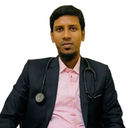
Dr. Arif Ahmed
General Physician/ Internal Medicine Specialist
9 Years • MBBS, MD (Genl. Med.)
Kolkata
MCR SUPER SPECIALITY POLY CLINIC & PATHOLOGY, Kolkata

Dr. Tapabrata Ray
General Physician/ Internal Medicine Specialist
4 Years • MBBS,DGM,CPMeC,ACMDC
Kolkata
MCR SUPER SPECIALITY POLY CLINIC & PATHOLOGY, Kolkata
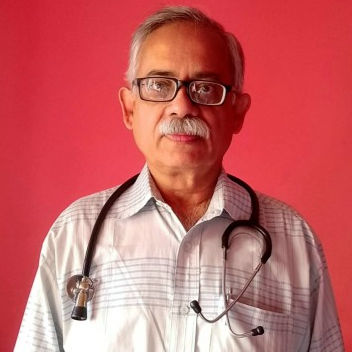
Dr. Pinaki Mukhopadhyay
General Physician/ Internal Medicine Specialist
32 Years • MBBS
Kolkata
MCR SUPER SPECIALITY POLY CLINIC & PATHOLOGY, Kolkata
(25+ Patients)
More articles from Stroke
Frequently Asked Questions
1. Can young people have a stroke?
Yes. While risk increases with age, strokes can occur at any age, including in children. Causes of stroke in young adults often include conditions like cervical artery dissection, heart defects, or clotting disorders.
2. What is the difference between a stroke and a heart attack?
A heart attack is a blockage of blood flow to the heart muscle. A stroke is a blockage or rupture of blood flow to the brain. Both are medical emergencies.
3. How can I tell if someone is having a TIA versus a full stroke?
You can't, and you shouldn't try. The symptoms are identical. Since a TIA can be a precursor to a major stroke, it must be treated with the same urgency.
4. What are the long-term effects of a stroke?
Effects depend on the stroke's location and severity but can include paralysis, speech and language problems, memory loss, and emotional challenges.
5. How can I support a family member during stroke recovery?
Patience and encouragement are vital. Educate yourself about their specific challenges, help them adhere to their rehabilitation plan, and provide emotional support. Joining a support group can also be beneficial.
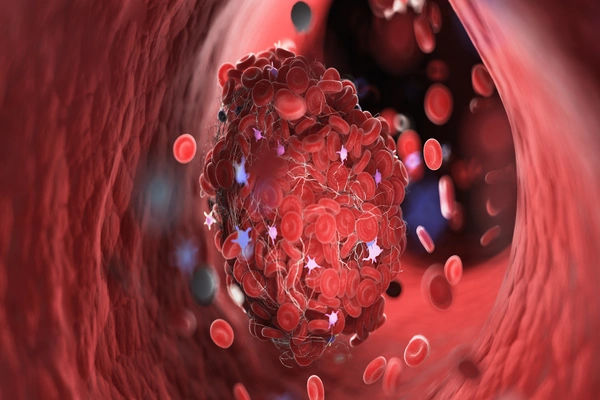

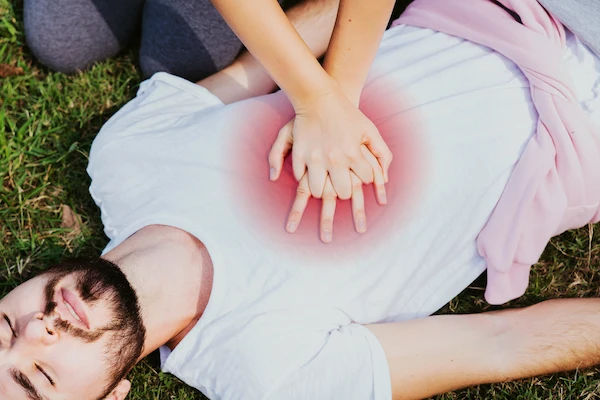
_0.webp)
